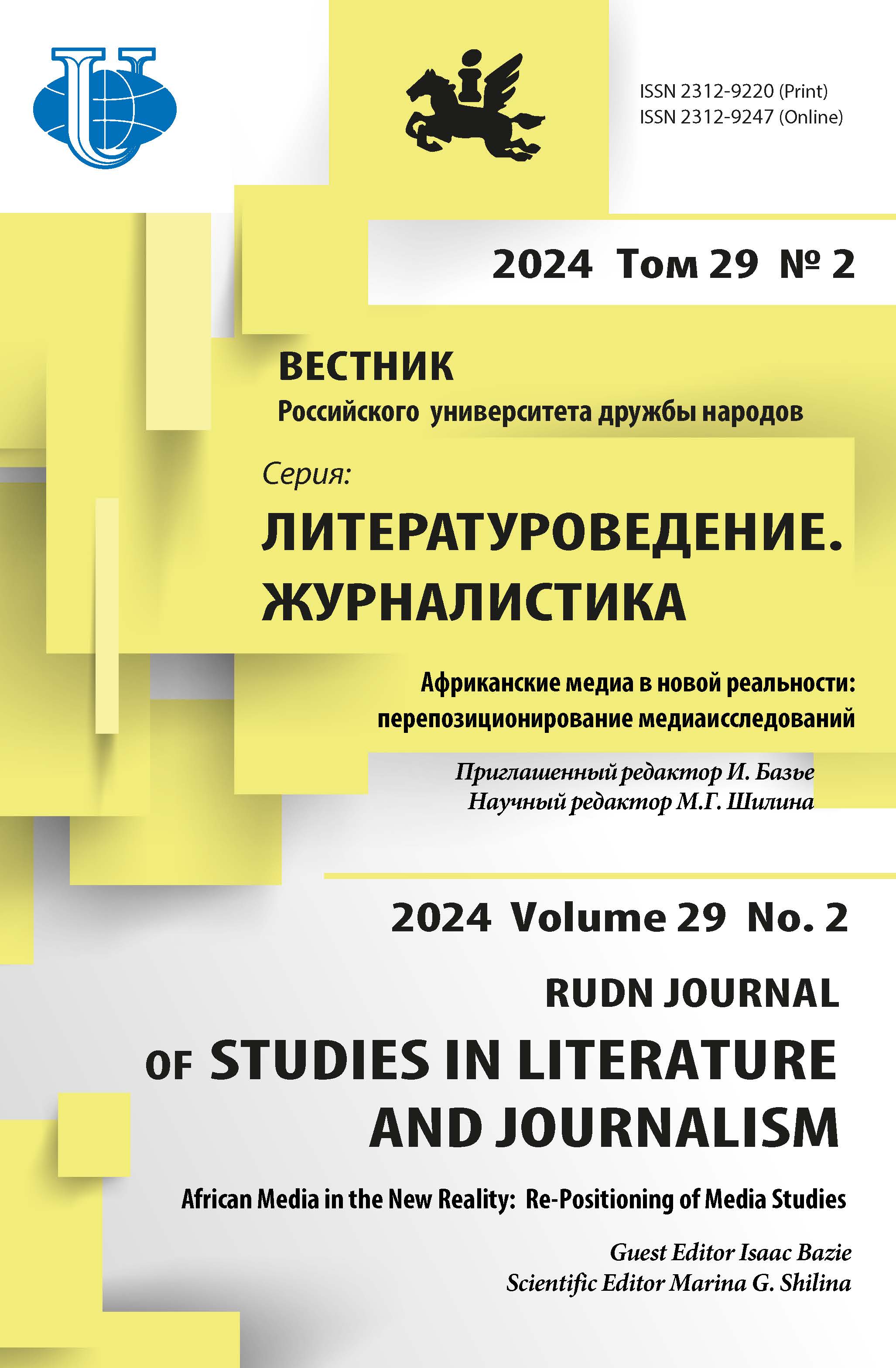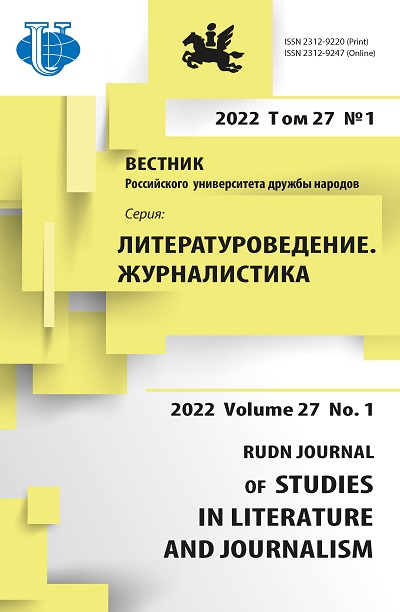Образ женщины в китайской лирике периода Шести династий
- Авторы: Малахевич Д.Е.1
-
Учреждения:
- Институт стран Азии и Африки МГУ им. М.В. Ломоносова
- Выпуск: Том 27, № 1 (2022)
- Страницы: 86-93
- Раздел: Литературоведение
- URL: https://journals.rudn.ru/literary-criticism/article/view/30722
- DOI: https://doi.org/10.22363/2312-9220-2022-27-1-86-93
Цитировать
Полный текст
Аннотация
В предлагаемой статье рассматриваются особенности женских образов в китайской лирике периода Шести династий (Лючао). Приводится их типологическая характеристика в контексте указанного периода, а также намечена эволюция образов в сопоставлении с предшествующими эпохами. Отмечено структурное различие в женской и мужской лирике. Проводится анализ творчества ведущих поэтов периода Шести династий. Делается вывод о том, что в мужской лирике указанного периода женский образ оставался идеализированным, унифицированным и нарциссичным. В изображении женских образов поэты-мужчины пользовались стандартным набором художественных средств. Женщина предстает как объект эстетического наслаждения в неразрывной связи с окружающей ее обстановкой и предметами будуара. Выдвигается тезис о возникновении в лючаоской поэзии образа «прекрасной дамы». Как в женской, так и в мужской лирике появляются все более индивидуализированные образы, наблюдается отход от традиционных гендерных стереотипов. В поэзии эпохи Шести династий возникает осознание поэтами своей субъектности, как в жизни, так и в творчестве. Женские образы эпохи Лючао оказываются наделенными рефлексивностью и психологизмом.
Ключевые слова
Об авторах
Дарья Евгеньевна Малахевич
Институт стран Азии и Африки МГУ им. М.В. Ломоносова
Автор, ответственный за переписку.
Email: malakhevichd@yandex.ru
ORCID iD: 0000-0002-0340-4495
магистр филологии, аспирант кафедры китайской филологии
Российская Федерация, 125009, Москва, ул. Моховая, 11, стр. 1Список литературы
- Ван Дэхуа. Цзо Сы «Сань ду фу» Е ду дэ сюаньцзе ю мяосе. 王德华. 左思《三都赋》邺都的选择与描写 [Описание столицы Е в «Одах о трех столицах» Цзо Сы] // Чжэцзян дасюэ сюэбао. 2013. № 43 (4). С.146-156
- Ван Юн. Даньчжуан нунмо цзон сянъи: Ханьдай юй Вэйцзинь шици шигэчжун нюйсин синсян бицзяо. 王勇 淡妆浓抹总相宜--汉代与魏晋时期诗歌中女性形象之 比较 [«В любом ты, милочка, наряде хороша»: сравнение женских образов в поэзии периодов Хань и Вэй-Цзинь] // Аньхойская литература. 2010. № 4. C. 79
- Ван Юн. Цзянлунь Вэйцзинь Наньбэйчао фучжун нюйсин синсян дэ синчэн юаньинь. 王勇 浅论魏晋南北朝赋中女性形象的形成原因 [Краткий обзор факторов, повлиявших на формирование женских образов в одах периодов Вэй-Цзинь и Наньбэйчао] // Журнал педагогического института Тайюаньского университета. 2010. № 28. С. 45-46
- Вахтин Б.Б. Заметки о лирике Шэнь Юэ // Историко-филологические исследования. М., 1974
- Гань Б. Записки о поисках духов (Соу шэнь цзи) / пер. Л.Н. Меньшикова. СПб., 1994. C. 12-15
- Гэ Хун. Баопу-цзы, Вайпянь, Цзимю. 葛洪 抱朴子•外篇•疾谬 [Трактат «Баопуцзы», внешняя часть, глава «Болезни и заблуждения»] // Чжунго шуцзи. 1954. C. 148
- Кравцова М.Е. «Красавица» - женский образ в китайской лирике (поэзия древности и раннего средневековья) // Проблема человека в традиционных китайских учениях. М.: Наука, 1983. С. 153-162
- Кравцова М.Е. Опыт тематического анализа китайской лирической поэзии эпохи Шести династий (III-VI вв.) // Asiatica: труды по философии и культурам Востока. 2013. № 7. С. 28-59
- Лу Шуцзюнь. Вэйцзинь Наньбэйчао сяошо нюйсин синсян цзеду. 楼淑君 魏晋南北朝小说女性形象解读 [Интерпретация женских образов в романах периодов Вэйцзинь и Наньбэйчао] // Гуансийский журнал социальных наук. 2005. № 7. С. 91-93
- Оу Яннянь. Вэйцзинь Наньчао вэньсюэ цзыцзюэсин чэнъинь цзянси. 欧阳年 魏晋南朝文学自觉性成因浅析. [Анализ причин формирования литературного самосознания в период Вэй-Цзинь и Южных династий] // Журнал Хунаньского университета радио и телевидения. 2007. № 1. С. 57-60
- Се Улян. Чжунго фунюй вэньсюэши. 谢无量 中国妇女文学史/著 [История женской литературы Китая]. Цзинань: Шаньдун хуабао чубаньшэ, 2019. С. 108
- Ян Лу. Вэйлэ гэнхаодэ хуочже: Вэйцзинь нюйсин чжуйцю цзиншэнь дули дэ цючжэ даолу. 杨露为了更好的活着--魏晋女性追求精神独立的曲折道路 [В стремлении к лучшей жизни: непростой путь женщин периода Вэйцзинь к обретению духовной независимости] / Институт литературы Северо-западного педагогического университета. Ланьчжоу; Ганьсу. 2016. С. 35.
- Robertson M. Voicing the Feminine: Constructions of the Gendered Subject in Lyric Poetry by Women of Medieval and Late Imperial China // Late Imperial China. 1992. 1 (13). P. 63-110
















